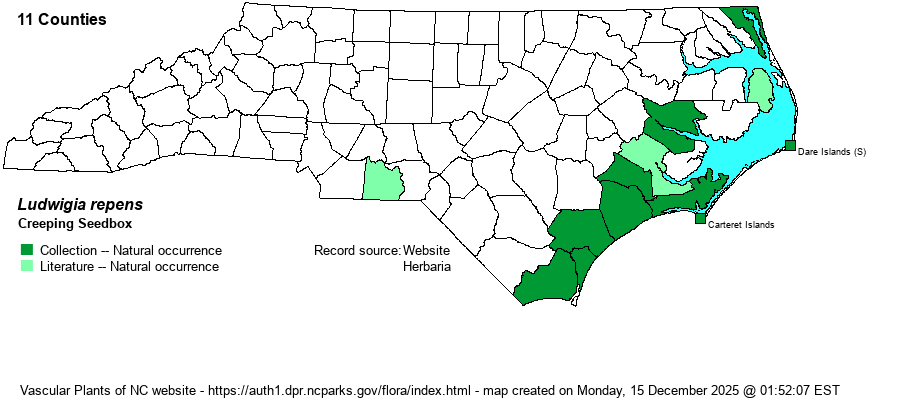| Author | J.R. Forster | |
| Distribution | Occurs along nearly the entire coast, even though it is not yet known for VA. However, it is poorly known, owing to its very small size, and also owing to apathy nowadays from biologists to work in coastal marshes. A photo record for Anson County on iNaturalist is considered as Natural for the time being, as Weakley's (2024) map shows it as occurring in the SC Piedmont and Mountains, as well as in these provinces in GA.
This species has a very wide but spotty range in the Southern states, ranging coastally from eastern NC to FL (throughout), and then west to CA.
| |
| Abundance | Rare to uncommon, or better stated as "probably rare to uncommon", but the NCNHP has shown apathy regarding it, not having it on a Watch List now. Weakley (2018) shows it as "uncommon" on his range map. It has a State Rank of S2S3, perhaps correct, though there are not that many state specimens. The website editors feel that it could be put back on a Watch List, where it was a few decades ago. | |
| Habitat | This is a species of open, wet ground with essentially no competition -- in shallow pools, ditch margins, edges of coastal fresh to oligohaline marshes, and other sunny wet ground. | |
| Phenology | Blooms from June to September, and fruits shortly after flowering. | |
| Identification | This is a tiny, decumbent, creeping plant, growing to about 2-3 feet long. It has small, opposite leaves, each of which is oblanceolate (somewhat wider above the middle) to elliptic, but only about 2/3-1-inch long and 1/2-inch wide. This species may have petals -- the very common L. palustris does not -- but some plants do not. If present, they (4) are pale yellow and very small, with the spread flower barely 1/4-inch across. At least, the 4 sepals are persistent and are triangular. Most importantly, in this species the floral tubes and capsules lack green banding, whereas in L. palustris the floral tube and capsule have 4 longitudinal dark green bands. Good luck in trying to identify this species, as various references are not consistent in their descriptions. If you are lucky to see yellow petals on such a plant, congratulations; but otherwise you likely will need to look at the capsules for green stripes/bands (which this species lacks and the common one does have). | |
| Taxonomic Comments | Older references named the species as L. natans.
| |
| Other Common Name(s) | Creeping Primrose-willow | |
| State Rank | S2S3 | |
| Global Rank | G5 | |
| State Status | | |
| US Status | | |
| USACE-agcp | OBL link |
| USACE-emp | OBL link |

